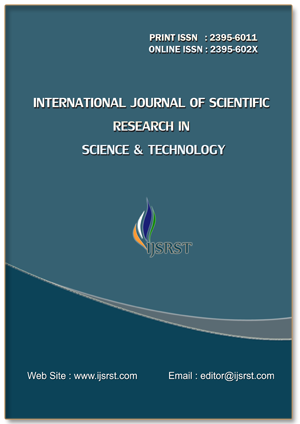A Study on Handwriting Examination in Different Postures
DOI:
https://doi.org/10.32628/IJSRST251222684Keywords:
Handwriting analysis, forensic handwriting examination, posture influence, writing under constraint, handwriting variationAbstract
Handwriting is often used as a reliable tool in forensic investigations, especially for verifying documents and identifying individuals. However, most handwriting samples are typically collected under normal seated writing conditions. In real-life situations, people may write under unusual postures, which can influence the way their handwriting appears. This study focuses on analyzing handwriting written in three specific postures: standing against a wall, lying down, and while travelling. Participants were asked to write a fixed text in each of these positions, and the resulting samples were examined for noticeable changes in writing features such as alignment, pressure, slant, size, and overall clarity. The objective was to observe how these postures impact handwriting and whether a person's unique writing style still remains recognizable. The results showed that while certain visual aspects of handwriting changed due to discomfort or lack of stability, core individual traits were still identifiable. This highlights the need for forensic experts to consider writing posture as a factor during handwriting examination in non-standard scenarios.
📊 Article Downloads
References
V. Thakre and D. Kumawat, “Examining the Impact of Various Postures on Natural Variations in Signatures: A Systematic Investigation,” Asian Journal of Advances in Research, vol. 7, no. 1, pp. 183–199, May 2024.
J. Guilbert et al., “Imagining Handwriting Movements in a Usual or Unusual Position: Effect of Posture Congruency on Visual and Kinesthetic Motor Imagery,” Psychological Research, vol. 85, no. 6, pp. 2248–2260, Sep. 2021.
C. Porac, S. Coren, and A. Searleman, “Inverted Versus Straight Handwriting Posture: A Family Study,” Behavior Genetics, vol. 13, no. 3, pp. 311–320, May 1983.
M. Latash et al., “Approaches to Analysis of Handwriting as a Task of Coordinating a Redundant Motor System,” Human Movement Science, vol. 22, no. 2, pp. 153–171, Apr. 2003.
D. Alamargot and M.-F. Morin, “Does Handwriting on a Tablet Screen Impact Students’ Graphomotor Execution? A Comparison Between Grades 2 and 9,” in Translation of Thought to Written Text While Composing, Springer, 2012, pp. 315–338.
S. Bala, V. Y. Vishnu, and D. Joshi, “Handwriting-Based Automated Assessment and Grading of Degree of Handedness: A Pilot Study,” arXiv preprint arXiv:2412.01587, Dec. 2024.
M. Faundez-Zanuy et al., “Handwriting Biometrics: Applications and Future Trends in e-Security and e-Health,” arXiv preprint arXiv:2202.12760, Feb. 2022.
A. Govindhan et al., “Analysis of Handwriting Task Using Electromyography,” Journal of Physics: Conference Series, vol. 1706, no. 1, p. 012147, 2020.
M. Thomas et al., “Handwriting Analysis in Parkinson's Disease: Current Status and Future Directions,” Movement Disorders Clinical Practice, vol. 4, no. 6, pp. 806–818, Nov. 2017.
Y. Hamdi et al., “Handwriting Quality Analysis Using Online-Offline Models,” arXiv preprint arXiv:2010.06693, Oct. 2020.
J. Levy and M. Reid, “Is Handwriting Posture Associated with Differences in Motor Control? An Analysis of Asymmetries in the Readiness Potential,” Neuropsychologia, vol. 20, no. 4, pp. 421–428, 1982.
F. Danion et al., “Adaptations of Writing Posture in Response to Task Demands for Left- and Right-Handers,” Laterality: Asymmetries of Body, Brain and Cognition, vol. 9, no. 2, pp. 145–160, Apr. 2004.
M. Drotar et al., “Survey on Handwriting-Based Personality Trait Identification,” Expert Systems with Applications, vol. 124, pp. 282–308, Jun. 2019.
K. Plamondon and S. N. Srihari, “On-Line and Off-Line Handwriting Recognition: A Comprehensive Survey,” IEEE Transactions on Pattern Analysis and Machine Intelligence, vol. 22, no. 1, pp.
Downloads
Published
Issue
Section
License
Copyright (c) 2025 International Journal of Scientific Research in Science and Technology

This work is licensed under a Creative Commons Attribution 4.0 International License.
https://creativecommons.org/licenses/by/4.0




